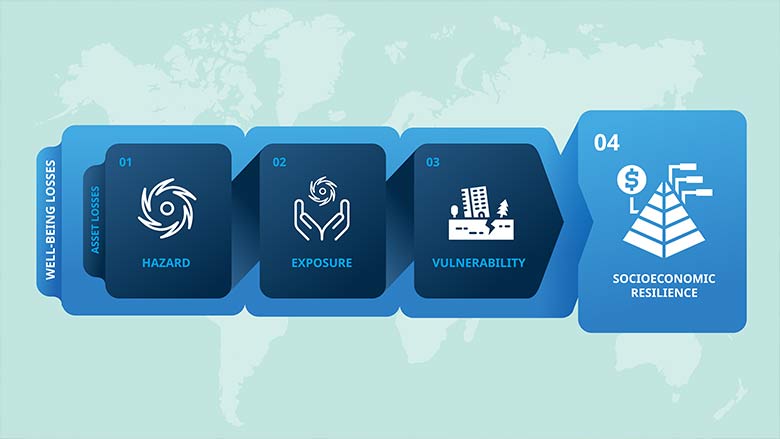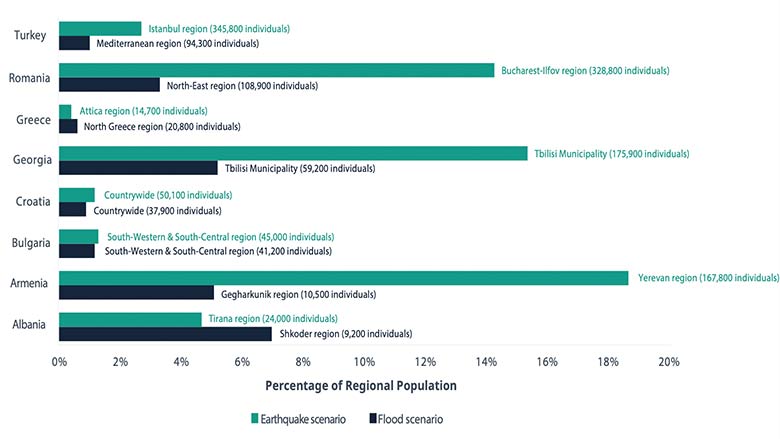A key takeaway from the report is that the economic well-being of citizens is affected far more than what estimated costs of physical damages to buildings and public infrastructure suggest. This is because physical damages tend to affect poor people the most, who have more limited capacity than the average income group to cope with and recover from such losses. In all of the eight countries in Europe and Central Asia analyzed, the average socioeconomic resilience is below 50%, meaning that welfare impacts are twice as severe as what is suggested by direct damages.

The study also shows that the recovery and reconstruction process depends not only on the extent of physical damages induced by disasters but also on the economic structure of each country and the level of socioeconomic resilience of the affected population.
For example, while most damages from a significant earthquake in the West Marmara region (Turkey) is likely to be addressed in less than 3 years, it could take more than 10 years in the region of Kukes (Albania) to recover from the same earthquake event. The report also found that a 200-year earthquake event could potentially push 14 to 19% of local populations into poverty in the cities of Yerevan (Armenia), Tbilisi (Georgia), and Bucharest (Romania).

Fortunately, the international community is learning how to better quantify often-overlooked impacts like these. Similar to traditional risk assessments, socioeconomic resilience can be quantified using a variety of spatial resolutions, ranging from household to national averages. This type of risk assessment methodology has been applied in several countries to help disaster risk management strategies better incorporate the lived experience of vulnerable communities into strategies to recover from shocks.
Importantly, this methodology also generates empirical evidence to identify priority income groups as well as at-risk sub-national areas that are significantly vulnerable to disasters. Informed by a more socially inclusive accounting of disaster costs, a socioeconomic resilience lens can provide new justifications to invest in disaster risk reduction and guide the creation of new tools and policies like inclusive financial services, broad social protection, and targeted post-disaster support to vulnerable households.
This analysis, funded by the Global Facility for Disaster Reduction and Recovery, shows that traditional assessment of disasters – as well as the corresponding designs of disaster response and recovery programs – must consider the hidden, compounding impacts on poor populations in order to build genuine resilience for all.
"poor" - Google News
July 22, 2021 at 02:16AM
https://ift.tt/3eM60JQ
In Europe and Central Asia, the Poor Lose More When Disaster Strikes - World Bank Group
"poor" - Google News
https://ift.tt/2ykjlaA
https://ift.tt/3djK71y
Bagikan Berita Ini

















0 Response to "In Europe and Central Asia, the Poor Lose More When Disaster Strikes - World Bank Group"
Post a Comment